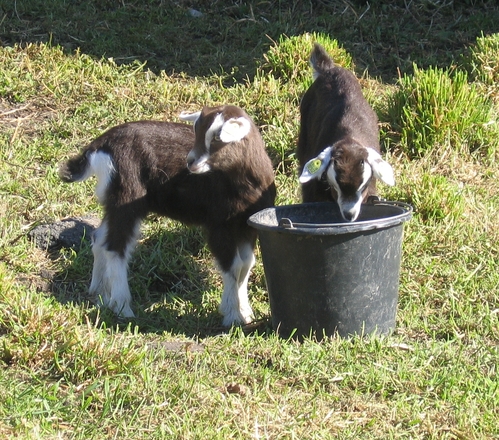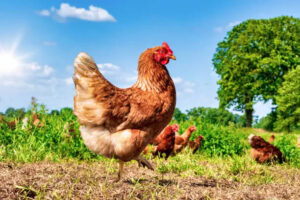Raising goats on a hobby farm has become a popular choice for those looking to connect more closely with their food sources or simply enjoy the lively companionship these animals provide. Goats are relatively easy to manage due to their size and care requirements and can offer various benefits, including milk, meat, and even fiber. However, hobby farming with goats also presents unique challenges and requires careful planning. This guide explores the ideal types of goats for hobby farms, essential care tips, and potential pitfalls to consider.
Selecting the Right Goat Breed for Hobby Farms

There are over 300 recognized goat breeds around the world, each adapted to specific environmental conditions and serving various purposes. Choosing the right breed of goat depends on your farm’s size, your needs (whether for milk, meat, fiber, or as pets), and the amount of time you can dedicate to their care:
- Dwarf Breeds: Nigerian Dwarf and Pygmy goats are excellent for hobby farms with limited space. Nigerian Dwarfs are renowned for their rich, high-quality milk, while Pygmies are often kept as pets due to their amiable nature and smaller stature.
- Nubian Goats are known for their distinctive long, floppy ears and Roman noses, Nubian goats are excellent milk producers with high butterfat content in their milk.
- Pygmy goats are a small, playful breed known for their friendly and docile temperament, making them a popular choice for pets and excellent companions for families and hobby farmers alike.
- Milk Producing Breeds: For those with slightly more room, medium-sized breeds like Alpines, LaManchas, or Nubians are excellent milk producers and can adapt well to various climates and conditions.
- Alpine Goats are hardy, versatile milk producers known for their adaptability to various climates and terrains.
- LaMancha goats are distinctive for their very short ear pinnae and are highly valued for their excellent dairy production, offering a high butterfat content in their milk, which is ideal for cheese-making.
- Nubian goats are recognized for their large, floppy ears and Roman noses, and are cherished for their rich, high butterfat milk, making them one of the most popular dairy goat breeds worldwide.
- Fiber Goats: Angora and Cashmere goats are perfect for hobby farms focused on fiber production. They require more grooming to maintain their coat’s quality but offer valuable fibers like mohair and cashmere.
- Angora Goats are native to Turkey, Angora goats produce mohair, a soft silk-like fiber used in high-quality textiles.
- Cashmere goats are renowned for their luxurious undercoat of fine, soft fiber known as cashmere, which is highly prized in the textile industry for its warmth and silky texture.
Essential Care Tips for Raising Goats

Housing and Space: Goats need a clean, ventilated, and dry shelter to protect them from weather extremes. Ensure adequate space for them to move, play, and exercise, which is crucial for their physical and mental health. Proper fencing is essential to keep them safe and secure within their designated areas.
Goats are generally less tolerant of wet and cold conditions compared to sheep and cattle, and they will instinctively seek shelter if it’s available. While rain might cause little to no discomfort during warm weather, it’s important to ensure that goats do not stay cold and wet for extended periods in colder temperatures.
Diet and Nutrition: A balanced diet is critical for goats, primarily consisting of quality hay or pasture. Supplemental grains can be offered in moderation, along with fresh water and mineral supplements to fulfill their nutritional requirements. Goats are browsers rather than grazers like cows. They prefer to eat leaves, twigs, vines, and shrubs. This dietary preference makes them excellent at weed control, and they are often used in natural or sustainable farming practices to manage plant growth and maintain healthy land.
Regular Health Maintenance: Schedule consistent check-ups with a veterinarian to manage vaccinations, deworming, and any other health concerns. Regular hoof trimming and coat care are also necessary, particularly for fiber goats.
Reproduction and Care: Female goats, called does, have a gestation period of approximately 150 days and can often have two or three kids at a time. Goats require attentive care, including proper nutrition, shelter, and regular health checkups. Vaccinations, deworming, and hoof care are critical components of goat husbandry to prevent diseases and ensure the wellbeing of the herd.
Potential Challenges on Hobby Farms

Local Regulations: Always check local zoning laws regarding livestock on hobby farms. Some areas may have specific restrictions on the number of animals, type of housing, or how close structures can be to property lines.
Managing Noise and Odors: Goats can be vocal and their enclosures can quickly become odorous if not maintained properly. Regular cleaning and strategic placement of their housing can help manage odors and keep neighborly relations positive.
Predator Protection: Secure your goats against common predators such as coyotes, dogs, and foxes, which can pose threats even in more populated areas. Proper fencing, secure nighttime enclosures, and guardian animals can help protect your herd.
Commitment Level: Goats require a substantial commitment of time and resources. Prospective goat owners should be ready for the daily responsibilities of feeding, cleaning, and general care, along with the long-term commitment of caring for livestock.

Keeping goats on a hobby farm can be a rewarding endeavor that enriches your life and provides various agricultural benefits. Whether you’re looking for fresh dairy products, unique fibers, or simply the pleasure of their company, goats are a versatile choice for any hobby farmer. By understanding their needs and preparing for the challenges, you can create a thriving and joyful environment for your goats and your family.
Intriguing Goat Facts: Discovering the World of Caprines
Goats are fascinating creatures with a rich history and a host of intriguing traits that make them stand out among farm animals. Here are some interesting facts about goats that highlight their unique characteristics and behaviors:
- Ancient Domestication: Goats were one of the first animals to be domesticated by humans around 10,000 years ago. They have been used for their milk, meat, fur, and skins over millennia.
- Incredible Climbers: Goats are exceptional climbers known for their ability to scale steep and rocky terrains. This skill allows them to access fresh vegetation that other animals can’t reach. There are even instances of goats climbing trees to feed.
- Varied Diet: Unlike cows that are grazers, goats are browsers. They prefer to eat the tips of woody shrubs and trees, as well as broad-leaved plants. They are known to clear out overgrown vegetation in areas, which can be very beneficial for land management.
- Social Intelligence: Goats are very social and intelligent animals. They can learn their names, come when called, and are capable of complex problem-solving tasks to reach food or escape enclosures.
- Emotional Expressiveness: Research suggests that goats are capable of complex emotional responses. They can respond to human facial expressions and prefer smiling faces to angry ones. They also communicate with each other through bleats and other vocalizations.
- Prolific Breeders: Goats can breed outside of their natural mating season, which is unique among hoofed animals. A female goat, called a doe, can have multiple births (twins or even triplets) in one breeding season.
- Weed Control: Due to their dietary preferences, goats are used in many parts of the world as a natural way to control weed and maintain landscapes. They are particularly effective at eliminating invasive plant species that are troublesome to other forms of wildlife and agriculture.
- Cultural Significance: Goats have significant roles in many cultures’ folklore and mythology. For instance, in Greek mythology, the god Pan is depicted with the legs and horns of a goat.
- Diverse Products: Beyond the usual meat and milk, goats provide a variety of other products. For example, cashmere and mohair are luxurious fibers produced from the fur of specific goat breeds.
- Survival Skills: Goats have a strong survival instinct which allows them to adapt to various harsh environments around the world. This adaptability has made them a valuable asset in many rural and arid regions.
These facts illustrate just how integral and impressive goats are, not just in agricultural contexts but also in natural and cultural settings. Whether as part of a sustainable farming initiative, a pet, or a participant in local ecosystems, goats continue to impress with their versatility and charm.









